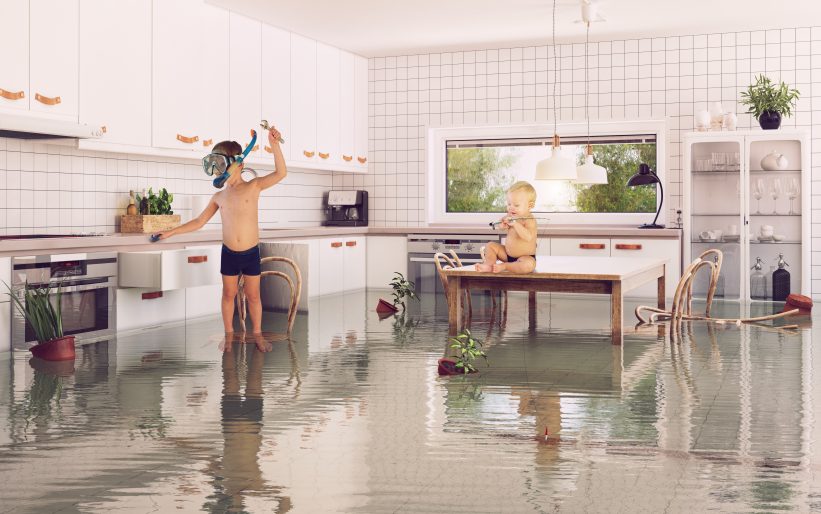The content below involving How To Prevent Fire And Water From Ruining Your Holiday Season is particularly engaging. You should keep reading.

Water provides life, water intrusion on parts where it's not meant to be can result in damages. If the water saturates into your structure, it can peel off away surface areas and wear down the foundation. Mold and also mildew additionally prosper in a wet environment, which can be hazardous for your health. Houses with water damages odor mildewy and also old.
Water can come from many resources such as tropical storms, floodings, burst pipelines, leaks, and also drain issues. In case you experience water damages, it would be great to know some safety and security preventative measures. Here are a few guidelines on just how to handle water damages.
Do Prioritize Residence Insurance Policy Coverage
Water damages from flooding as a result of heavy winds is seasonal. You can also experience a sudden flood when a damaged pipeline instantly bursts into your home. It would be best to have house insurance policy that covers both acts of God such as all-natural calamities, and emergencies like broken plumbing.
Do Not Neglect to Switch Off Energies
In case of a catastrophe, particularly if you stay in a flood-prone area, it would certainly be advisable to shut off the major electric circuit. This cuts off power to your whole residence, avoiding electric shocks when water comes in as it is a conductor. Furthermore, do not fail to remember to turn off the major water line shutoff. When floodwaters are high, furniture will certainly move and also cause damage. Having the major shutoff turned off avoids further damages.
Do Remain Proactive and Heed Weather Informs
Pay attention to emptying cautions if you live near a creek, river, or lake. Doing so decreases potential property damage.
Do Not Neglect the Roof
You can stay clear of rainfall damage if there are no holes and leakages in your roof covering. This will certainly prevent water from flowing down your wall surfaces and saturating your ceiling.
Do Focus On Small Leakages
A ruptured pipe does not occur overnight. Generally, there are red flags that show you have actually deteriorated pipes in your house. You may see bubbling paint, peeling wallpaper, water touches, water discolorations, or leaking audios behind the wall surfaces. Eventually, this pipeline will rupture. Preferably, you must not wait for points to intensify. Have your plumbing fixed prior to it results in large damage.
Don't Panic in Case of a Burst Pipeline
Keeping your presence of mind is essential in a time of crisis. Worrying will only intensify the problem due to the fact that it will certainly stifle you from acting quick. Timing is crucial when it comes to water damages. The longer you wait, the even more damage you can anticipate. Hence, if a pipeline bursts in your residence, quickly turned off your main water valve to remove the source. Then disconnect all electric outlets in the location or switch off the circuit breaker for that part of the house. Finally, call a reputable water damage repair specialist for support.
Water provides life, water intrusion on parts where it's not supposed to be can result in damages. Homes with water damages smell mildewy and old.
Water damages from flood fees to hefty winds is seasonal. You may notice gurgling paint, peeling off wallpaper, water touches, water discolorations, or leaking noises behind the walls. When it comes to water damages, timing is crucial.
Some Do's & Don't When Dealing with a Water Damage
DO:
Make sure the water source has been eliminated. Contact a plumber if needed. Turn off circuit breakers supplying electricity to wet areas and unplug any electronics that are on wet carpet or surfaces Remove small furniture items Remove as much excess water as possible by mopping or blotting; Use WHITE towels to blot wet carpeting Wipe water from wooden furniture after removing anything on it Remove and prop up wet upholstery cushions for even drying (check for any bleeding) Pin up curtains or furniture skirts if needed Place aluminum foil, saucers or wood blocks between furniture legs and wet carpet Turn on air conditioning for maximum drying in winter and open windows in the summer Open any drawers and cabinets affected for complete drying but do not force them open Remove any valuable art objects or paintings to a safe, dry place Open any suitcases or luggage that may have been affected to dry, preferably in sunlight Hang any fur or leather goods to dry at room temperature Punch small holes in sagging ceilings to relieve trapped water (don't forget to place pans beneath!); however, if the ceiling is sagging extremely low, stay out of the room and we'll take care of it DO NOT:
Leave wet fabrics in place; dry them as soon as possible Leave books, magazines or any other colored items on wet carpets or floor Use your household vacuum to remove water Use TV's or other electronics/appliances while standing on wet carpets or floors; especially not on wet concrete floors Turn on ceiling fixtures if the ceiling is wet Turn your heat up, unless instructed otherwise

As an avid person who reads about Ways to Reduce The Risk Of Fire And Water Damage, I was thinking sharing that excerpt was sensible. Do you know someone else who is curious about the subject? Take a moment to promote it. I praise you for your time. Visit again soon.